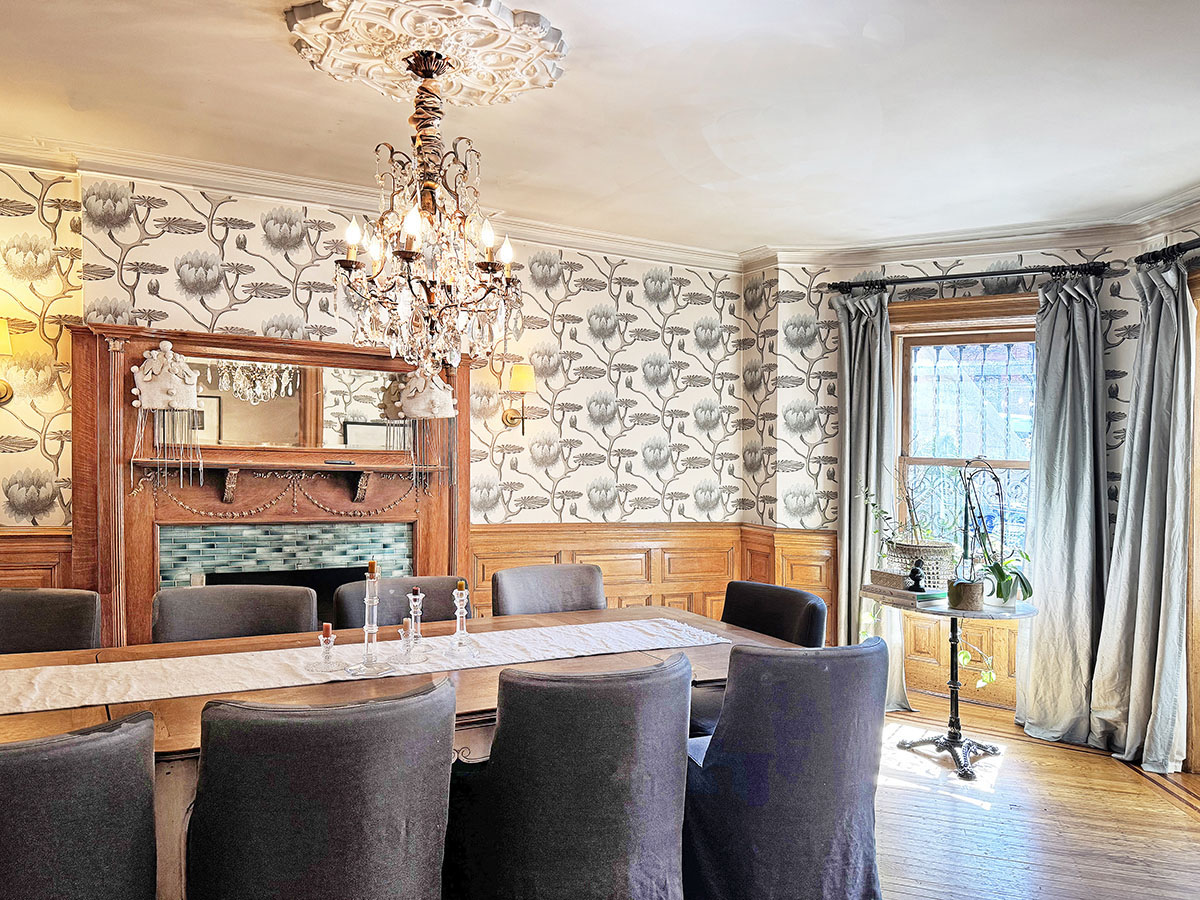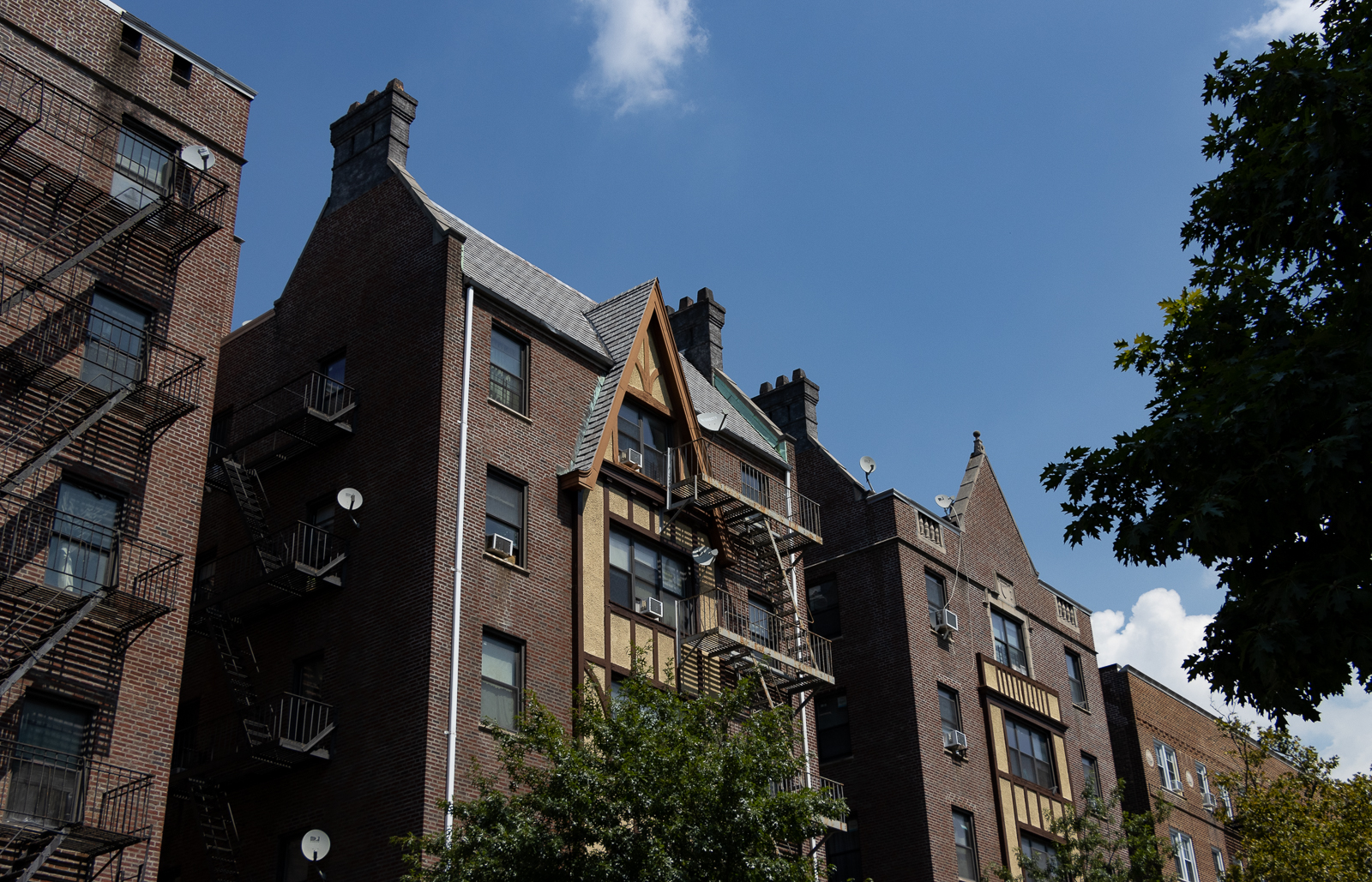Cobble Hill Towers May Go Co-op
That’s the news tucked in this Streetscapes column from the NY Times, profiling the 1879 tenement buildings that peer out over Hicks Street and the BQE in Cobble Hill. “The 76 three- and four-room apartments in the Tower Buildings each rented for $1.50 to $2 a week, and the 1880 census lists tenant occupations like…

 That’s the news tucked in this Streetscapes column from the NY Times, profiling the 1879 tenement buildings that peer out over Hicks Street and the BQE in Cobble Hill. “The 76 three- and four-room apartments in the Tower Buildings each rented for $1.50 to $2 a week, and the 1880 census lists tenant occupations like coppersmith, typesetter and tailoress,” they write, and carried such luxuries as private toilets, decorative iron railings and a garbage chute. The buildings (including a sister nine-building complex across the street, called the Home buildings) were purchased in the 1970s for $450,000 by one Frank Farella, who gut renovated but kept rents low; they cite a one-bedroom with “killer views” that goes for $1,335 per month. Now, as we reported back in May, Farella has partnered with the developer Hudson Companies (our Third and Bond bloggers) to breathe new life into them; he put them on the market for $60 million with the clause that he remain a part of their future. Apparently, that future may include condo or co-op conversion. Will they somehow remain affordable, you think?
That’s the news tucked in this Streetscapes column from the NY Times, profiling the 1879 tenement buildings that peer out over Hicks Street and the BQE in Cobble Hill. “The 76 three- and four-room apartments in the Tower Buildings each rented for $1.50 to $2 a week, and the 1880 census lists tenant occupations like coppersmith, typesetter and tailoress,” they write, and carried such luxuries as private toilets, decorative iron railings and a garbage chute. The buildings (including a sister nine-building complex across the street, called the Home buildings) were purchased in the 1970s for $450,000 by one Frank Farella, who gut renovated but kept rents low; they cite a one-bedroom with “killer views” that goes for $1,335 per month. Now, as we reported back in May, Farella has partnered with the developer Hudson Companies (our Third and Bond bloggers) to breathe new life into them; he put them on the market for $60 million with the clause that he remain a part of their future. Apparently, that future may include condo or co-op conversion. Will they somehow remain affordable, you think?
Architectural Wealth, Built for the Poor [NY Times]
Exclusive: Hudson To Partner on Cobble Hill Towers [Brownstoner]
Photo from the Brooklyn Historical Society





The buildings underwent a huge restoration in 1980-82. That is why they look so good today. They do hot really lend themselves to modern luxury apartments because they lack elevators, there is no lobby, and the rooms are small. definitely workers’ housing. A model tenement is still more or less a tenement. I like the facades a lot and think it is a nice place for folks just starting out as long as they do not become trapped there as they grow older.
Montrose, I live in the Heights building and can tell you that my apartment at least does have the original tin ceilings (although they’re painted white). The hardwood floors may not be original but are quite old (and well maintained).
Poley, I think you are mixing messages here. These buildings are admired today by preservationists like myself and others, because high minded social activists like Alfred T White put thought into the needs of his workers, employed architects and builders who made worker housing attractive, as well as utilitarian, and most importantly, put his own wallet into the mix. He had zeal for this kind of reform, obviously, as he tried it several times, each time improving the beauty and function of the buildings. He used innovative practices in new technologies of indoor plumbing, ventilation, fire safety. The fact that they still stand, in spite of the building boom and substantial money in those areas, show that people still respond to beauty and good design.
That’s a far cry from the econo-boxes being raised now. Where are the innovations, akin to indoor toilets, in today’s buildings? Where are the truly green practices that would elevate today’s “worker’s housing� I refer to solar, photovoltaic, geothermal building techniques, not just bamboo floors and fluorescent bulbs. Where are the concessions to space planning and studies of personal spatial needs for modern family living in most of today’s building? Very, very few builders want to spend the money for these things, except in the most expensive luxury buildings, yet more energy and waste is produced by the vastly larger number of the non-rich.
The density of White’s buildings was out of proportion to much of those areas, true, but the buildings are so good, who cares? I would look forward to modern housing, needed for community growth, if that housing was as assiduously considered and thought out as these building were. Unfortunately, very little of it is, leaving us with the basic needs of housing met with high rise public housing, but none of the beauty of these buildings. We need more Alfred T. White’s in this world.
Everytime we pass these on the BQE, I make a comment regarding their beauty. I didn’t know their history. Wish today’s developers would take note and build aesthectically pleasing buildings while keeping rents low.
They sure don’t build them like they used to.
Mr. White’s complexes are some of my favorite buildings in Brooklyn. I still remember when I “found” them, while walking around the Heights.
I’ve never been in either of them, but always wondered what remained of the original tenement fixtures – a fireplace, perhaps tin ceilings, built in cupboards, etc. I guess they were all renovated out long ago.
I hope they continue to be as they were built to be – apartments for ordinary people, affordable to people with a wide variety of occupations and incomes.
I always love these buildings, as they highlight the absurdity of the neighborhood activists and NIMBY bloggers like “Pardon me for Asking” as well as the reactionary city council members.
Here we have charming housing built for the poor in 1879 (!) and of course, the building size exceeds bulk requirements by something like 35%. Well over a century ago, learned and civic minded folks considered these properties great contributions to society. Today, they would be condemned as a scourge.
The city has become regressive at time when dynamic, forward thinking public policy is more necessary than ever before.
Both complexes were built by Alfred T. White as progressive workers housing:
“In 1877 he completed the Home Buildings on the corner of Hicks and Baltic Streets. These twin, six-story, fire-proof brick buildings, with their sunlit rooms, private toilets, and balconies, were “the most advanced tenement houses in the world.” Eager that other builders should follow his lead, White made certain his buildings proved that good housing rented to those of limited means could be profitable. In 1878 and 1879 near his first buildings White constructed the Tower Buildings with approximately 170 apartments. In 1890, closer to the waterfront, he completed the nine Riverside Buildings, his greatest achievement. Far ahead of its time, the project had its own park, playground, bathhouse and music pavilion. None of his buildings occupied more than 52 percent of its lot…White’s buildings and the publicity he gave them in his writings and lectures helped pave the way for enactment of New York State’s 1895 tenement legislation, requiring that a new tenement occupy no more than 65 percent of its lot. By 1900 White was a leading member of the New York State Tenement House Commission.”
http://www25.uua.org/uuhs/duub/articles/alfredwhite.html
Anyone know the connection between these and the similar looking complex on Columbia Place in Brooklyn Heights?
http://bstoner.wpengine.com/brownstoner/archives/2005/05/architecture_10_1.php
Perfect timing.